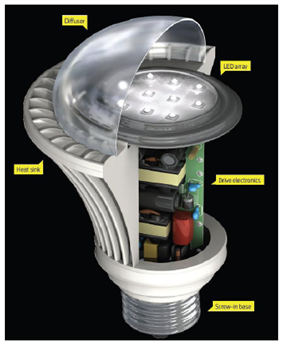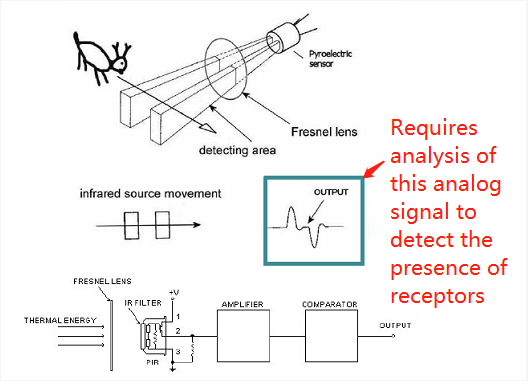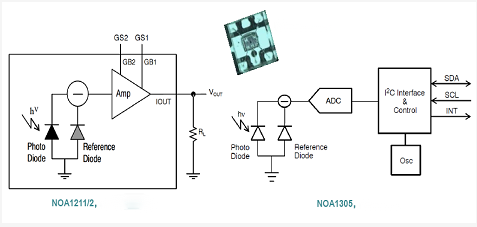Abstract:
LED lighting is developing rapidly. Intelligent lighting, ambient light-sensing design and intelligent modularization have become one of the trends in the development of LED light sources. This article describes the relevant situation of LED general lighting and the market development of LED “smart lighting”.
Today, while compact fluorescent lamps (CFLs) offer some energy savings, the mercury used raises growing concerns. According to incomplete statistics, landfills in the United States dispose of 600 million fluorescent lamps each year, equivalent to 15,000 kilograms of mercury waste. A teaspoon of mercury can contaminate 81,000m2 of lake water. As a result, the industry is increasingly turning its attention to more environmentally friendly, energy-efficient LED lighting.
1. Challenges of General Lighting LED Drivers
General lighting power range is wide, LED general lighting includes: residential (3 W ~ 15 W), such as 800 lm 60W A-19 bulb. Commercial and architectural decorative lighting (15 W ~ 75 W), such as 2,800 lm 4ft long T8 tube. Outdoor and infrastructure (75 W ~ 250 W), such as 13,000 lm 150W metal halide lamp.
These LED drivers encountered a number of challenges (see Figure 1):
(1) Energy efficiency is critical, as heat dissipation is limited due to the fixed bulb shape.
(2) The space inside the bulb is limited, especially for higher-power bulbs that require a larger heat sink area.
(3) LEDs are changing rapidly, with numerous options.
(4) It is necessary to reduce the constituent materials of the driver electronic circuit to increase the remaining space.
(5) The driver needs to be optimized to match different lighting and power requirements.
Figure 1 Challenges of LED drivers
Challenges for LED drivers include:
(6) LED configuration (LED number/drive current) affects the choice of topology.
(7) Bulb type affects heat sink design and greatly affects system selection, such as energy efficiency goals, available space.
(8) Factors affecting the choice of isolation or non-isolation topology include: LED selection, safety regulations, mechanical design expertise and technology.
(9) LED manufacturers innovate rapidly, launching new LED configurations and designs (high voltage LED/multi-LED package).
2. LED “Smart Lighting” Perspective
In addition, the characteristics of LEDs determine the advantages of “smart lighting” that can be realized. Because LEDs are easy to control and dim, electronic circuits can add a variety of new features, such as built-in occupancy sensors, adjusting brightness based on ambient light to save power, wireless interfaces without changing switches or cables, power-saving technologies, and convenience and safety.
However, smart lighting requires that the design of AC-DC LED driver ICs must be able to easily accommodate both analog and digital (PWM) dimming. Adopt low energy wireless interface, such as IrDA infrared, ZigBee and low energy bluetooth (Bluetooth LE). Wireless control standards are in place, such as ZigBee Light Link. Easy-to-use devices to measure ambient light and detect human activity (eg, using passive infrared sensors).
The NCL30082 LED driver is equipped with a smart dimming (see Figure 2) interface that enables analog dimming, digital dimming, or both analog and digital dimming with a single control pin, and the ability to turn off the driver. Easy to connect analog sensors or MCU general-purpose input/output port (GPIO), wide dimming range from 0~100%.
Figure 2 Intelligent dimming
The sensor used for dimming control is an occupancy sensor, which determines whether a lighted area is occupied. Power saving, security lighting control for room entrance or exit. Most typical sensors use passive infrared detectors, other sensor options include ultrasonic and motion sensors. Silicon light sensors can be used in a variety of applications, measuring ambient light to harvest sunlight. Light sensors can also be used to control LED lighting by sensing the light output of the fixture. The principle (see Figure 3) uses a passive infrared (IR) system to detect the presence or absence of receptors.
Figure 3 Passive Infrared (IR) System
The role of ambient light sensors
Signal processing and control of the light-sensitive silicon photodiode area, analog or serial communication interface (I2C or SPI) and interrupt MCU connection are possible using an ambient light sensor (ALS).
Figure 4 The role of ambient light sensor
Ambient light sensor technology (see Figure 4) is available in specialized surface mount packages with light windows, and light filters can be customized to optimize light response for specific wavelengths or color temperatures. Its design provides a human eye-like light response, optimized for LED lamp response, filtering out 50/60 Hz ripple.
In smart lighting, ambient light sensors can be dimmed both outdoors (dusk/dawn) and indoors (daylight harvesting), thus saving energy. Closed-loop control of the LED light source can adjust specific light output under different temperature and time conditions. Constant light output regulation with LED output light feedback saves and extends the life of the driver.
3. Conclusion
LED lighting is developing rapidly, and intelligent lighting, ambient light-sensing design and intelligent modularization have become one of the trends in the development of LED light sources. It is critical to determine the various driver topologies that can be used to replace comparable bulbs based on the selection and design of the LEDs.
Additionally, lamp design and system cost are affected by mechanical, optical design and driver topology trade-offs. Upcoming smart LED bulbs and LED lighting engine solutions will help enable next-generation LED lighting designs.




